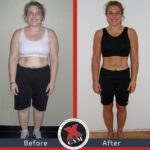As individuals embark on their fitness journey, one critical aspect of their training often goes overlooked: post-workout recovery. Contrary to popular belief, achieving optimal results from your workouts goes far beyond the exercises themselves. What happens during your post-workout recovery period can profoundly influence your body’s capacity to repair and grow. In this article, we will explore how you can maximize post-workout recovery through effective nutrition, rest, and techniques to help you achieve the best results possible at X Gym.
Located in Kirkland, Washington, X Gym offers a comprehensive range of training programs, including personal training, small group training, live online training, and an exercise app. Our team of expert trainers is committed to providing clients with the knowledge and tools needed for success in their fitness journey. This includes understanding the critical role that post-workout recovery plays in reaching your goals.
So, what exactly is post-workout recovery? It is a combination of processes that occur within the body to help restore and repair muscle tissue, replenish energy stores, and reduce inflammation after exercise. Recovery is essential in promoting muscle growth, enhancing performance, and reducing the risk of injury. By optimizing post-workout recovery through proper nutrition, rest, and techniques, individuals can maximize their gains, prevent overtraining, and ensure a more efficient fitness journey.
In the coming sections, we will delve into the different components of successful post-workout recovery, discussing essential nutrients and hydration, the critical role of sleep, and recovery techniques such as stretching, foam rolling, and massage. By understanding and implementing these vital elements, you can give your body the support it needs to repair and grow, further optimizing your experience and results at X Gym. Stay tuned as we unveil the secrets to maximizing post-workout recovery and elevating your fitness journey to new heights.
1. Nutrition and Hydration: Replenishing Your Body
Protein: The Building Blocks of Muscle Repair
The cornerstone of post-workout nutrition is protein. Consuming sufficient amounts of protein after a workout is crucial to repair and rebuild muscle tissue that has been damaged during exercise. Aim to consume between 20 to 40 grams of protein in the form of a shake or meal within 30 to 60 minutes following your workout. Good sources of protein include lean meats, low-fat dairy, and plant-based options such as beans and tofu.
Hydration and Electrolytes: Replacing Lost Fluids
Staying adequately hydrated throughout the day and during exercise is essential for overall health, workout performance, and recovery. After a workout, focus on replenishing lost fluids and electrolytes by drinking water or consuming an electrolyte-rich sports drink. Monitor your hydration status by checking the color and volume of your urine. A general guideline is to consume 20 to 24 fluid ounces of water for each pound lost during exercise.
2. The Power of Sleep for Recovery and Performance
Optimizing Sleep Quality and Duration
Adequate sleep is crucial for effective post-workout recovery. The National Sleep Foundation recommends adults aim for 7 to 9 hours of quality sleep each night. During sleep, the body releases growth hormones responsible for cellular repair and muscle growth. To optimize sleep quality, establish a consistent bedtime routine, create a sleep-conducive environment, and avoid stimulants such as caffeine and electronic screens close to bedtime.
Naps: A Valuable Addition to Recovery
If time permits, incorporating a short nap of 20 to 30 minutes during the day can provide an additional opportunity for recovery. Short naps can help reduce overall fatigue and boost mental alertness without interfering with nighttime sleep.
3. Recovery Techniques: Improve Flexibility, Reduce Soreness
Stretching: Maintain Flexibility and Range of Motion
Incorporating stretching exercises into your post-workout routine can help improve flexibility, maintain an optimal range of motion, and alleviate muscle tension. Perform static stretches for major muscle groups, holding each stretch for 20 to 30 seconds.
Foam Rolling: Enhance Mobility and Alleviate Tightness
Foam rolling or self-myofascial release is a valuable recovery technique that helps reduce muscle soreness and improve tissue elasticity. Use a foam roller to gently massage tight muscles and connective tissues for 1 to 2 minutes per area.
4. Massage: Promote Relaxation and Recovery
Massage therapy can help improve circulation, reduce muscle tension, and promote overall relaxation. Schedule a professional massage or perform self-massage techniques to reap the benefits of this recovery method.
Conclusion
Post-workout recovery is an essential component of the fitness journey that should not be overlooked. By incorporating effective nutrition, rest, and recovery techniques into your routine, you can maximize your results and enjoy a more efficient fitness experience at X Gym. With the support of our expert trainers and your continued dedication to proper recovery, you can unlock your full potential and achieve your fitness goals.









